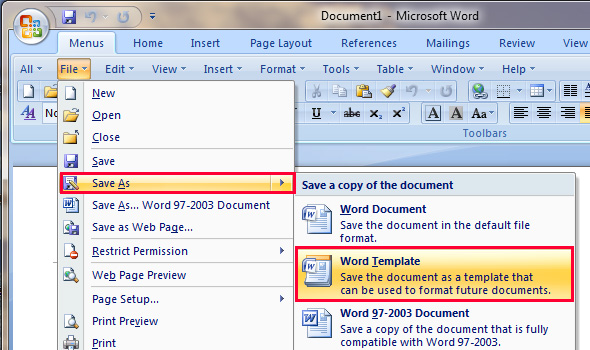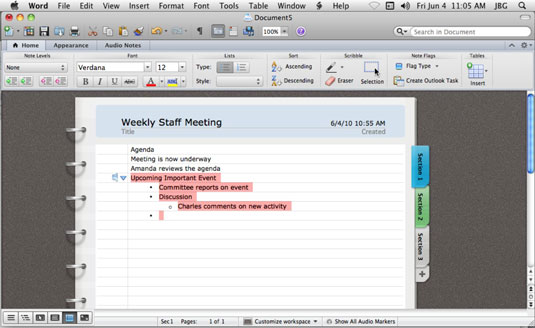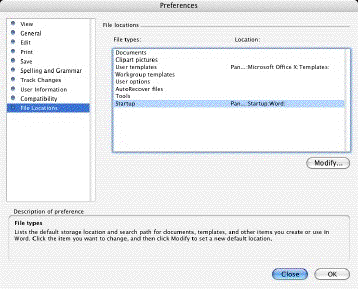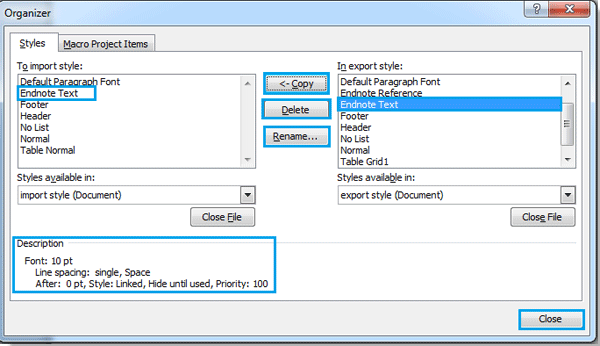

- #Word for mac create a template how to#
- #Word for mac create a template update#
You have a variety of options to choose from, but for a simple timeline that shows the main milestones of a project, I’d recommend going with the Basic Timeline, which you can see bordered below. Select the Process category within the window that pops up and pick the graphic type that you want to use for your Word timeline. Select the Insert tab and click on the SmartArt button in the Illustrations section. To do so, go to the Layout tab on the Word ribbon and click on Orientation. Open a new Word document and change the page orientation from Portrait to Landscape, which will make room for more items to be placed on the timeline.
#Word for mac create a template update#
Quit Word and restart it (to force it to update its preferences).How to make a timeline in Word 1. Save All does not appear unless you hold down your shift key. Hold down your Shift key and choose Save All from the File menu. Repeat for each additional kind of resource you wish to copy. In the right-hand window, choose the item(s) you want to restore. The left window lists the items in your new template, the right window lists the items in the old template. Organizer now shows you a list of the items available within each kind (if you clicked the Styles tab in the previous step, you see a list of the styles in each template). Let’s assume you want to bring your styles back: Click the Styles tab. 
Click the tab for the kind of item you want to bring back. At the top of the Organizer dialog, above both windows, there is a row of tabs, one for each kind of resource the Organizer can copy.You should now be able to see your old Normal Template in the directory if you cannot, search until you find it.

There is a Close File button below the left-hand window, and a Close File button below the right-hand window.
The right window of the Organizer should be blank. Just below the left window, Organizer should be showing Styles available In: Normal (global template) Otherwise you've got the wrong one open. Click on Tools>Templates and Add-ins dialog, click the Organizer button. Title Bar at the top of the Word window must show "Normal" otherwise, repeat from step 1. Choose Normal or Normal.dotm and click Open. Change the Show drop-down list to Word Templates. Use File>Open to navigate to the template location noted above. Restore customization from old Normal to new Normal If the old normal.dotm is corrupt and there are customizations in old Normal that you don't want to lose – such as macros, AutoText, custom toolbars, and styles – you can transfer them from OldNormal to your new Normal using Organizer. If by chance the normal.dotm location is changed, the normal.dotm can be located by opening Microsoft Office Word>Preferences>File Locations> dialog to confirm its location. Word X, Word 2001, Word 98: /Applications/Microsoft Office ***/Templates/Normal (where *** stands for your version of Office). Word 2004: ~/Documents/Microsoft User Data/Normal. Office 2008: ~/Library/Application Support/Microsoft/Office/User Templates/Normal.dotm. The location for normal.dotm are as follows: Try renaming the existing normal.dotm to oldnormal.dotm and reopen word to recreate a new normal.dotm. When newly blank document crashes, it is possible the problem persists in normal.dotm. In System Preferences > Save > enable " Always create a backup copy" and " Save AutoRecover info every 2 Min". Open Microsoft Word (or any other Office App). #Word for mac create a template how to#
If all is well, trash the old file otherwise, quit all Office apps again, trash the new files and drag the original files back to where they belong.Īdditional information on troubleshooting Microsoft Office fonts can be found here.īackups How to enable automatic save in Microsoft Office 2008?.If user is having problem with font then delete " Office Font Cache (12)", located in the same folder as Microsoft Office 2008 ist.The user will be prompted to re-enter the product key the next time Word is used. ~ User/Library/Preferences/Microsoft/Office 2008/ Microsoft Office 2008 ist.Application/Microsoft Office 2008/Office/ ist.
 Additionally delete/Move following files:. Navigate to ~User/Library/Preferences folder and drag all the files to desktop that starts with (xxx=name of Office app). Ensure all Office applications are closed. This document explains how to reset and back up Office 2008
Additionally delete/Move following files:. Navigate to ~User/Library/Preferences folder and drag all the files to desktop that starts with (xxx=name of Office app). Ensure all Office applications are closed. This document explains how to reset and back up Office 2008








 0 kommentar(er)
0 kommentar(er)
